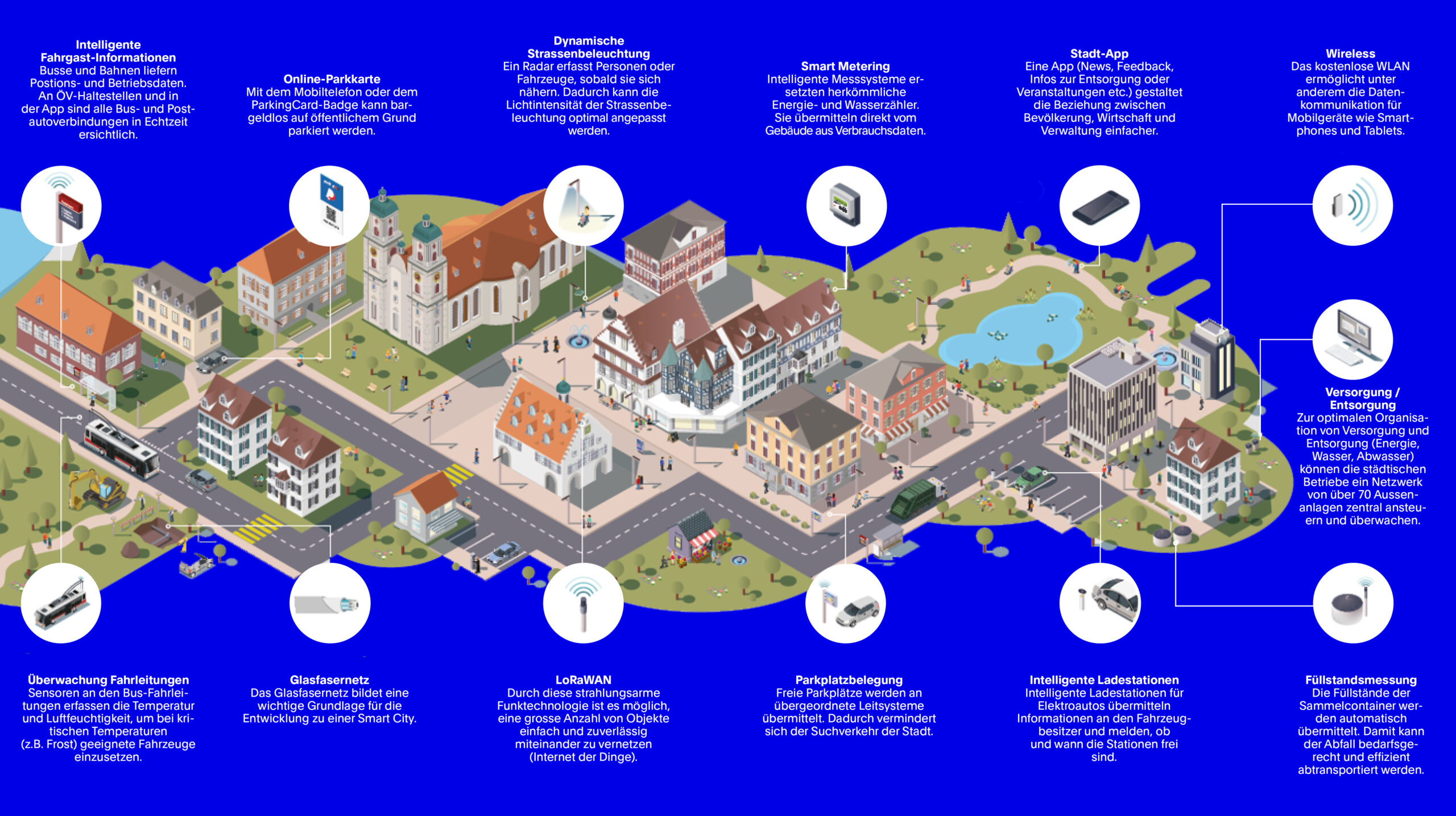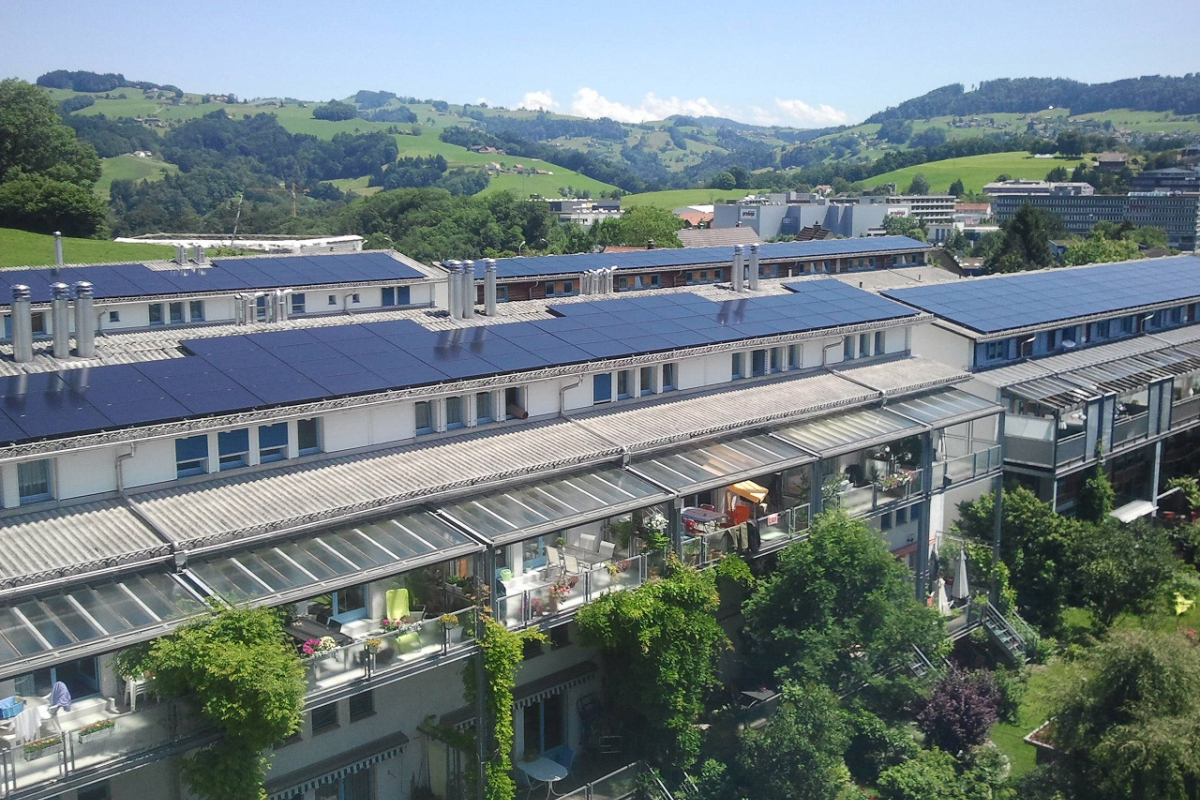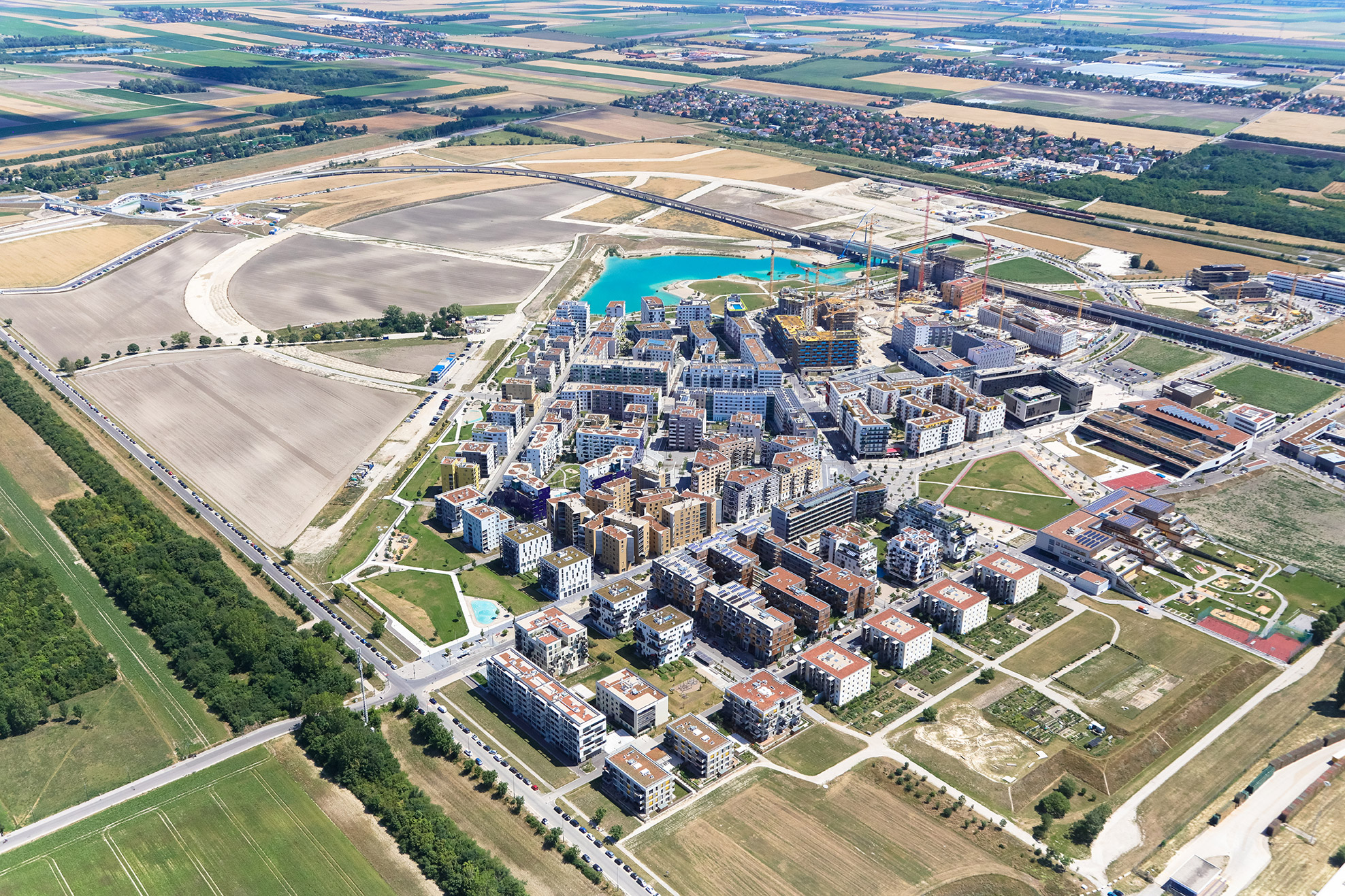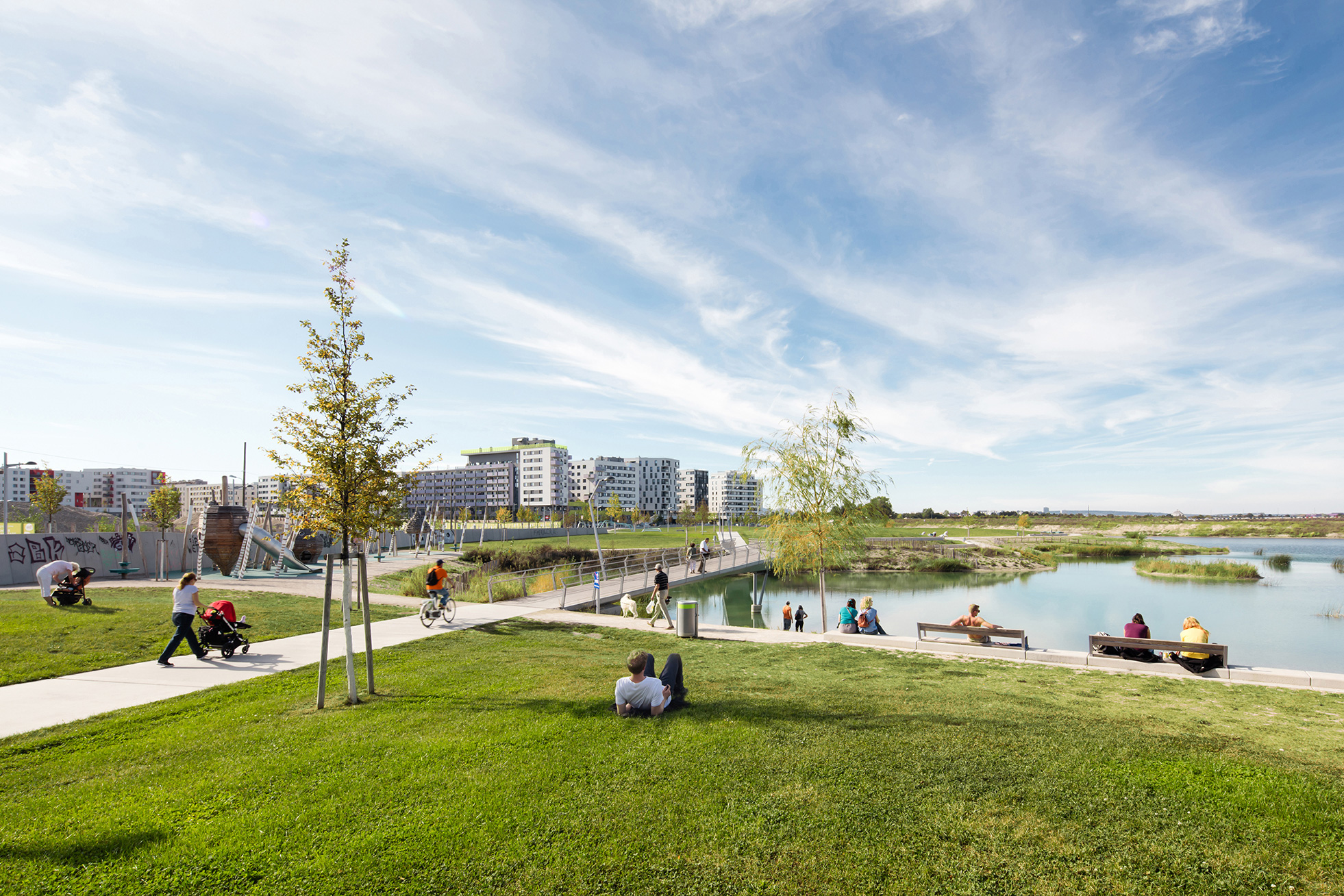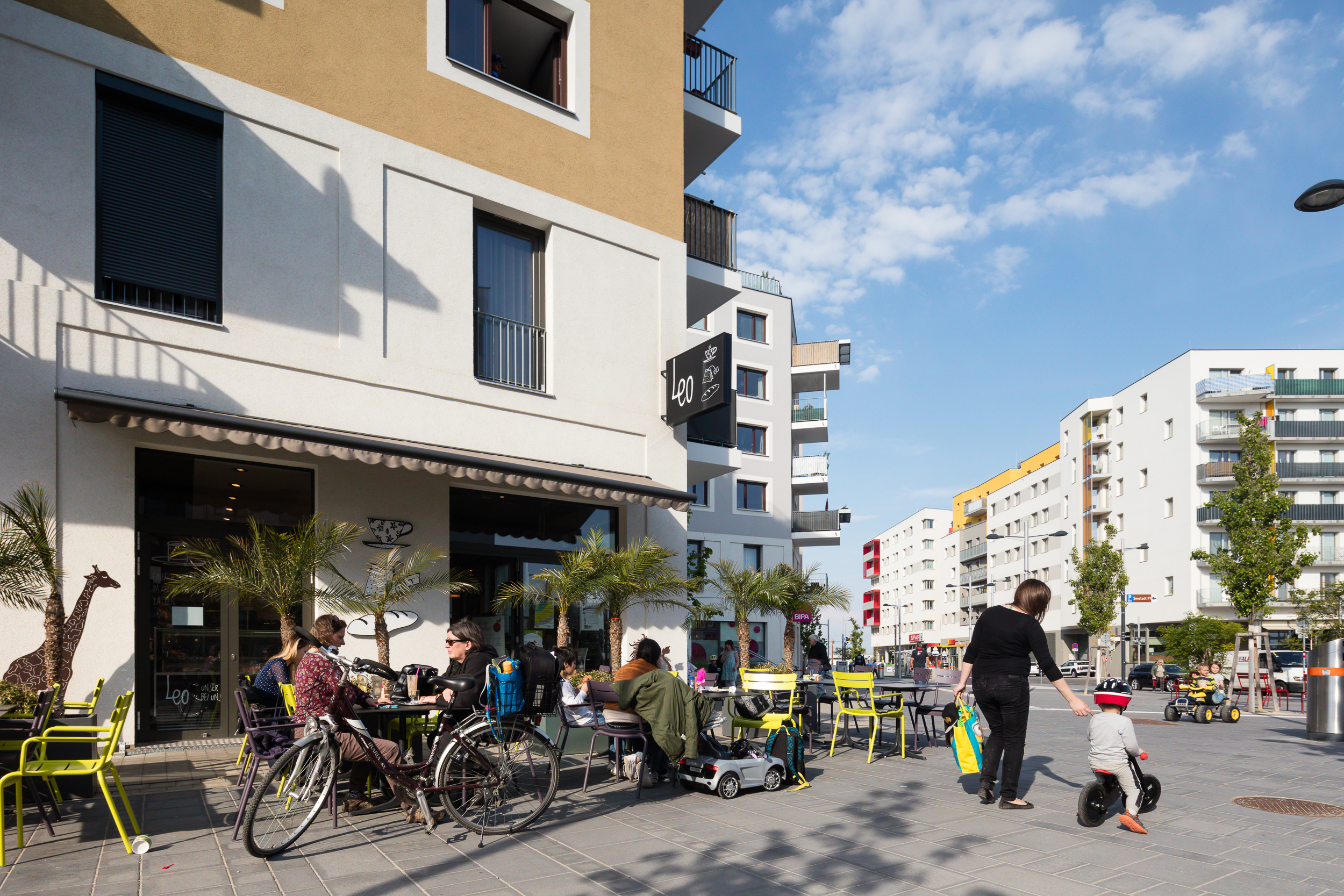The city
of the future
PerspectivesGIULIA BERNARDI • 04.12.2018
Cities are facing new challenges through urbanisation: The use of resources is increasing, the challenges facing the infrastructure and mobility are changing. In so-called «Smart Cities» the urban living space is to be made more sustainable through the use of intelligent technologies.
Overflowing waste bins, unnecessary driving around to find a suitable parking space. We are all familiar with these problems. This is not only stressful, but also uses economic and ecological resources.
Development concepts like «Smart City» are searching for suitable solutions to avoid such problems in the future. «Smart Cities» are regarded as cities in which digital technology is being used to improve the quality of life of the residents on the one hand and to enable resources to be used more sparingly on the other hand. For example by using sensors, which measure the quantity of waste in waste bins or provide information about the occupancy levels of parking spaces, the collection route for public rubbish collections or the traffic volume can be optimised.
Such measures bring not only personal advantages but they are also a necessary step as a result of increasing urbanisation. According to a report by the United Nations, in 2050 approximately two-thirds of the world’s population will be living in cities; which will affect countries such as India, China and Nigeria in particular. In Swiss cities the number of residents will rise by about 10 percent.
This development means that cities throughout the world will be facing new challenges: The rising population will increase the use of resources and traffic volumes and the requirements regarding living space, infrastructure and mobility will also change during the course of urbanisation.
John Wilmoth, Manager of the Population Department at the United Nations, sees urbanisation not only as a challenge but also as an opportunity: This is because it forces decision-makers to design urban living space in line with the new conditions and to create political framework conditions to make our actions cost less and use fewer resources.
From energy city to «Smart City»
Since the beginning of the century, the cities which network information and communication systems intelligently have been called «Smart Cities» because this provides a high quality of life with minimal use of resources. However, there is no uniform definition, says Benjamin Szemkus, Programme Manager of Smart City Schweiz. «Smart city should be understood less as a fixed term and more as a development process, which each city defines for itself.» In the final analysis, every city is associated with other circumstances in terms of demography, architecture and culture.
In Switzerland smart-city strategies have already been applied for several years. In 2012 the Federal Office for Energy initiated the campaign called Smart City Schweiz. The starting point were the so-called energy cities, which are committed to renewable energy and sparing use of resources. This commitment should be expanded as part of the programme through smart technologies. It’s because acting sustainably also means checking how effective the measures under energy policy actually are. For example, this is made possible by so-called Smart Grids: intelligent data and electricity networks, which balance out electricity consumption by storing energy and distributing it as required.
«Smart city should be understood less as a fixed term and more as a development process, which each city defines for itself.»
Benjamin Szemkus
Smart meters are an integral component of smart grids – they are intelligent measuring instruments, with which up to at least 80 percent of Swiss households are to be equipped by 2027. The information about electricity consumption will be transmitted to consumers on the one hand, and to the energy supplier on the other hand, who can make the corresponding forecasts on this basis. Balancing and re-distributing electricity consumption, which is to be ensured through reliable forecasts, will become increasingly important in the future: By using renewable energy, electricity production will no longer come from centrally controlled nuclear power stations, but will be increasingly organised de-centrally.
Public transport companies such as SBB also use the advantages, which a smart grid offers. Additional carriages and trains are used during the extremely busy commuter periods, which increase the demand for power. In such situations a software will switch off the heating for a short while. This means that energy consumption will be postponed for a few seconds up to a maximum of two minutes, without having an adverse effect on the well-being of travellers.
Smart City, Responsive City
Smart technologies ensure not only sustainable use of resources, but also enable city life to be designed with greater networking and more interactively. An example of this is the Remishueb district in St. Gallen, which is being expanded into a smart city area over the last few years. Residents were able to actively help design the district in various workshops; this created the Remis app among other things, which acts as the digital platform for the concerns of the approximately 850 inhabitants. Development into a smart city and the search for new forms of participation is also part of the Legislature objectives 2017–2020 of the city of St. Gallen. «At present we are drawing up a new urban participation regulation, which should be completed by 2020», says Christian Geiger, Digital Manager of the city of St. Gallen. An Open-data platform is also being constructed to make municipal and cantonal data accessible to the public. On the one hand, this is intended to make the activities of politicians and administrators transparent and on the other hand to support the residents in participating in political processes.
Similar projects can also be found in other Swiss cities. Since 2007 new buildings are being built in the Erlenmatt district of Basel on the basis of architectural study contracts and competitions. Something similar will take place in the Wolf Basel district, which is currently in the planning stage. In Zurich as part of the Digital administration 2018–2023 strategy an increasing number of services are becoming available online. For example via the app called Züri wie neu you can report damage to infrastructure.
The importance of participative measures is also emphasised by Gerhard Schmitt, Professor of Information Architecture at ETH Zurich. «‹Smart Cities› are only the beginning. More or less the first step towards a ‹Responsive City›», he described it in spring 2017 when being interviewed by the Handelszeitung. «The concept of intelligent cities is too brief and is defined too technically. It’s elementary that residents are again being actively included as a source of knowledge and decision-makers in the process.»
Becoming involved means not only promoting an interest in political decisions and in communal society, but also an understanding and acceptance with regard to smart-city strategies. This seems to be particularly important for topics such as data protection and the distribution of interests and power.
«‹Smart Cities› are only the beginning. More or less the first step towards a ‹Responsive City›. The concept of intelligent cities is too brief and is defined too technically. It’s elementary that residents are again being actively included as a source of knowledge and decision-makers in the process.»
Gerhard Schmitt,
Professor of Information Architecture at ETH Zurich
Smart strategies
Harald Heinrichs, Professor of Sustainability and Politics at Leuphana University Lüneburg, also mentions the distribution of interests and power within smart city projects. The projects should not help individual companies to sell their technologies to cities, but satisfy the requirements of the residents and in the final analysis lead to greater social, ecological and economic sustainability. Intelligent technologies are therefore not to be regarded as an end in themselves, but as a means to achieving the purpose. In order to ensure that this occurs, according to Heinrichs, there is a need for global sustainability strategies and objectives and also a re-think regarding organisational cultures and structures to involve residents to a greater extent. Such efforts are not only evident in Switzerland through participative districts or open-data platforms, but also throughout Europe. In Vienna Aspern Seestadt is intended to be developed into a smart district by 2028. As part of the research programme, the urban district will become a smart urban lab, in which new technologies and proposal for solutions are researched and then tested on site.
Continuing urbanisation emphasises the need for such projects. This is because in order to overcome the challenges, which the latter brings with it, we not only need smart technologies, but also smart strategies.
In Vienna Aspern Seestadt is intended to be developed into a smart district by 2028.
Photography / Grafics: Stadt St.Gallen, Genossenschaftsverband Höchst-Remishueb, Wien 3420 aspern Development AG, Daniel Hawelka (Aspern Seestadt Wien)
